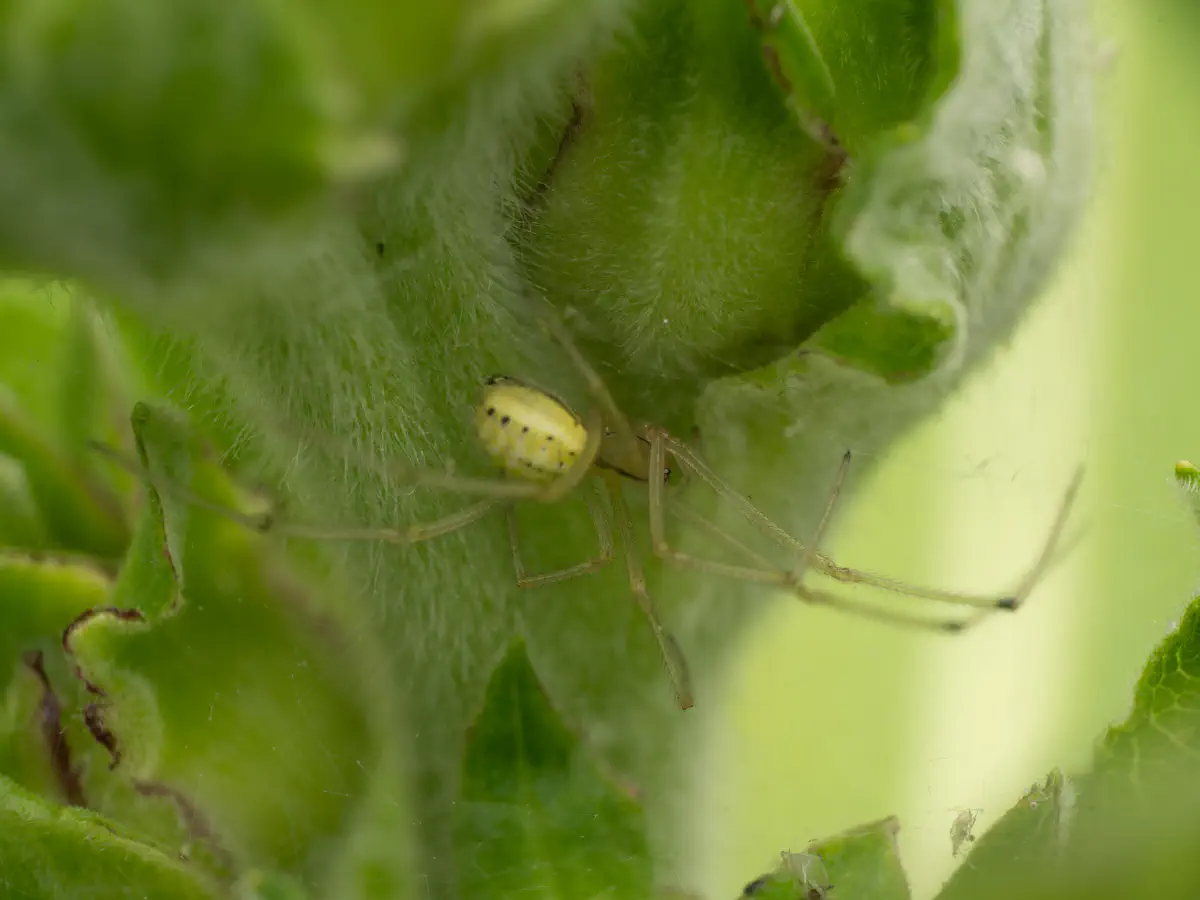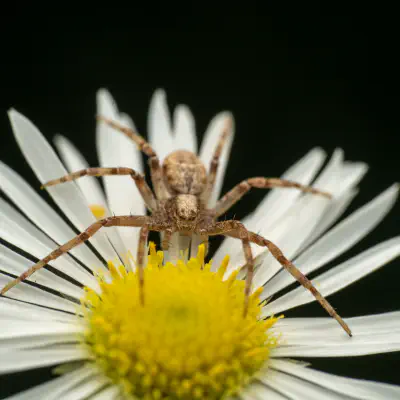This spider, reaching a length of 6 mm (excluding legs), they have translucent legs and the globular abdomen is extremely variable in colour and pattern: the background colour is usually white, cream or green and can be marked with a row of dark spots, a broad red stripe or with two red stripes in a v-shape. Their coloration can usually be categorized in 3 variations "Lineata" with plant yellow or cream opisthosoma. "Redimita" which has
a pair of dorsal red stripes and "Ovata" in which the entire dorsal area is red. The last variation is the rarest, only occurring sporadically in populations. To the naked eye, they are basically indistinguishable from E. latimana, which can only be distinguished by the male palpal bulb and the epigyne of females, in mature spiders. The same patterns mentioned also occur E. latimana, with the "lineata" being the most common of them.


